Sansevieria plants: species, growing and caring tips
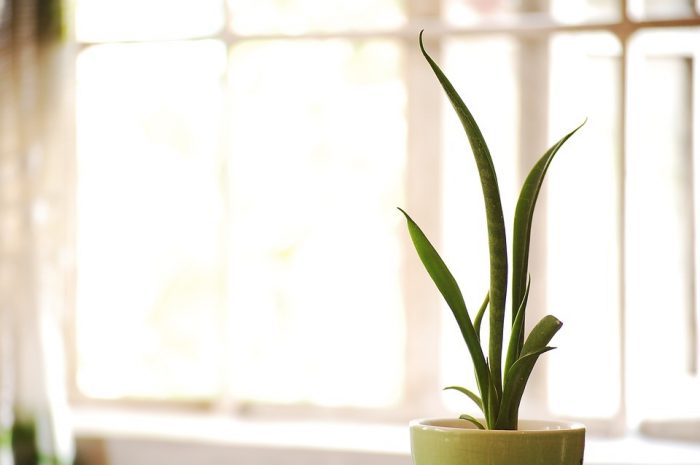
Sansevieria commonly known as the snake plants are succulent plants of the Dracaenaceae family, native to the dry tropics of Africa and India. With their long, elegant leaves that soar into the air, Sansevierias are one of the easiest plants to care for. Furthermore, they are robust and adapt to all types of lighting and tolerate irregular watering, in addition to being depolluting plants. Then, thanks to their ornamental shape, they are the perfect plants to embellish our interiors, our garden or our balcony.
There are many Sansevieria varieties. The genus is made up of about 130 species, although only a few are cultivated. Let’s discover in this article the most famous Sansevieria species used as houseplants and how to care for them.
Sansevieria species
Sansevieria pinguicula
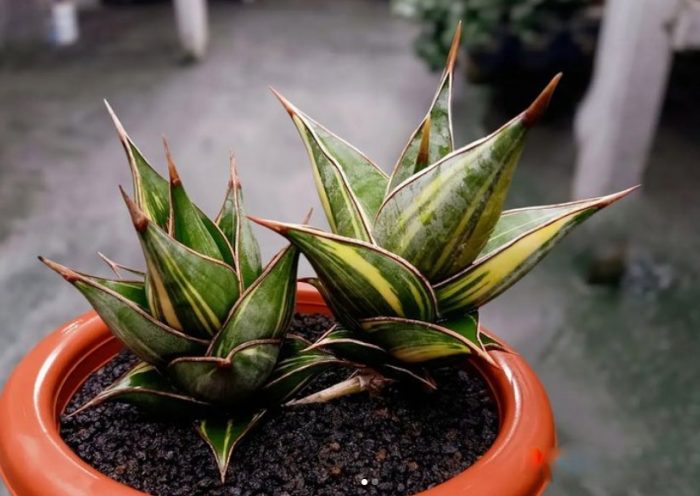
S. pinguicula, commonly known as the walking Sansevieria, is a rare succulent plant native to the Bura area of Kenya. This incredible houseplant has strong, stilt-like roots, that make the plant look like it’s walking on stilts, hence its name (walking Sansevieria). Also, it looks like a dwarf version of an Agave plant. This short-stemmed succulent has also waxy, thick leaves arranged in a rosette form. They are uniform greenish-blue in color with reddish-brown edges. This plant will rarely bloom in indoor cultivation, ut if it blooms you will see clusters of white, brownish, bottle-shaped flowers produced on vertical stalks.
Sansevieria francisii
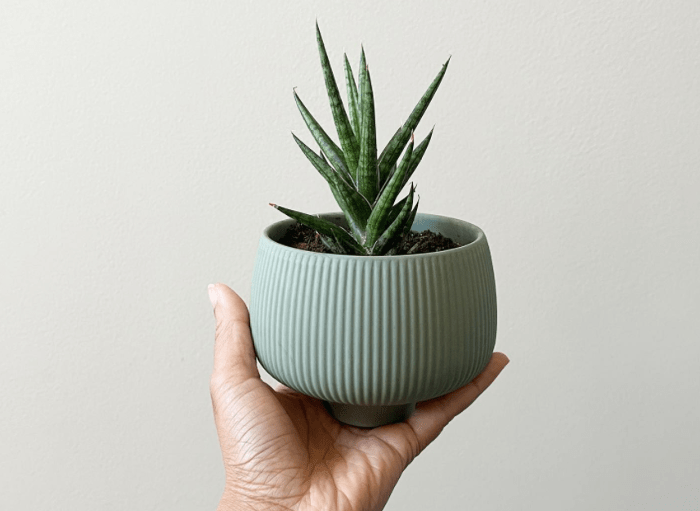
Sansevieria francisii, commonly known as mother-in-law’s tongue, is a unique perennial species of the Dracaenaceae family native to Kenya. This succulent plant growing to 60 cm in height produces 5 densely packed rows of leaves on its stem. The vibrant green leaves have a pencil-like shape with sharp spiny points. The paniculate inflorescence consists of Greenish-white flowers that are lightly scented and look very delicate.
Sansevieria cylindrica
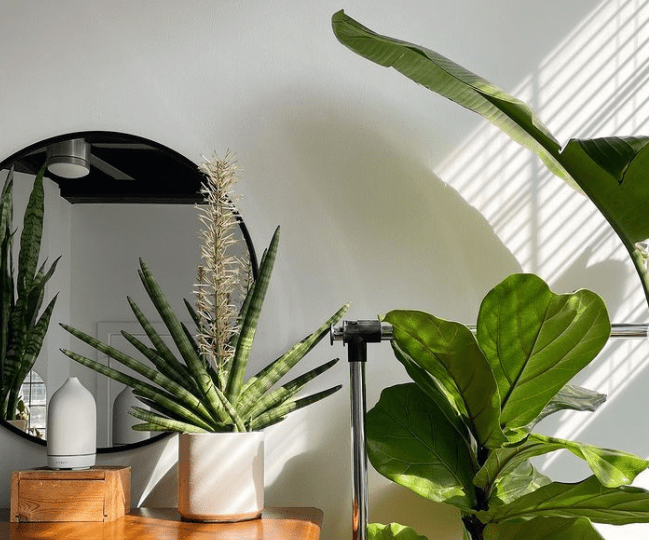
Sansevieria cylindrica, commonly known as African Spear, Cylindrical Snake Plant, Spear Sansevieria, or Saint Bárbara Sword in Brazil, is an evergreen perennial native to Angola. This succulent indoor plant has upright, grey-green and striped leaves. These leaves are cylindrical in shape but narrow to a point at their tips. A typical practice is to braid the stalks together and secure them with a rope or band at the top. Such controlled growth creates an elegant form of a normally rowdy plant. This very hardy succulent can be an extremely resistant houseplant and will survive even if you forget to water or feed it.
Sansevieria trifasciata
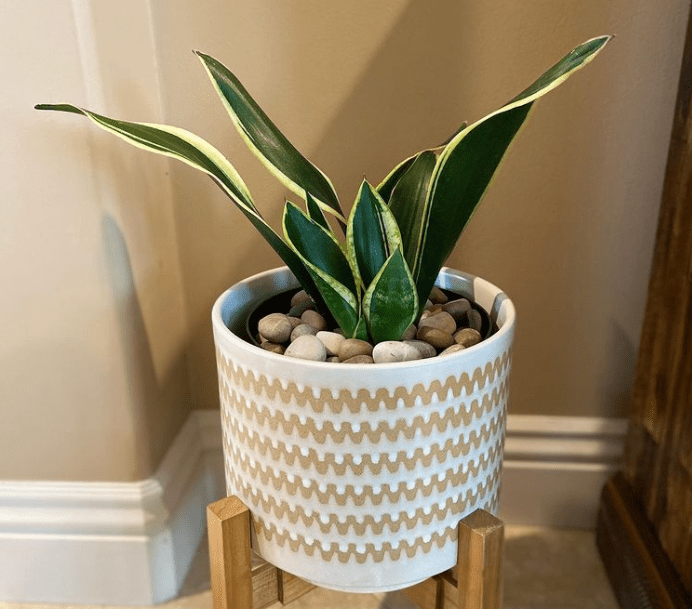
Sansevieria trifasciata, also known as mother-in-law’s tongue, is one of the most popular and hardy species of houseplants. This flowering Sansevieria features sharp, dark green, yellow-striped leaves and can range anywhere. Moreover, this popular houseplant produces tiny pale green scented flowers during spring. The variegated form of this species ‘Laurentii’ is brighter, with its leaves edged in light yellow. There is also a dwarf form, ‘Golden Hahnii’, in rosettes wider than tall.
Sansevieria bacularis
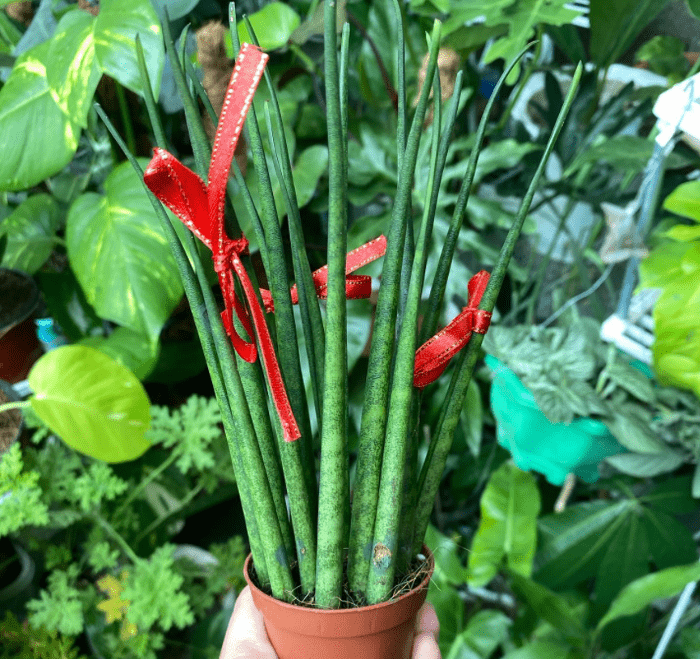
Sansevieria bacularis, sometimes called mikado, is a succulent plant that grows in southern Africa, Madagascar and southern Asia. This lovely compact variety of snake plants has cylindrical, thick, dark green leaves with stripes of a lighter greenish tint. The white flowers are grouped in cluster-shaped inflorescences that are about a meter long, usually shorter than the leaves.
Sansevieria fernwood
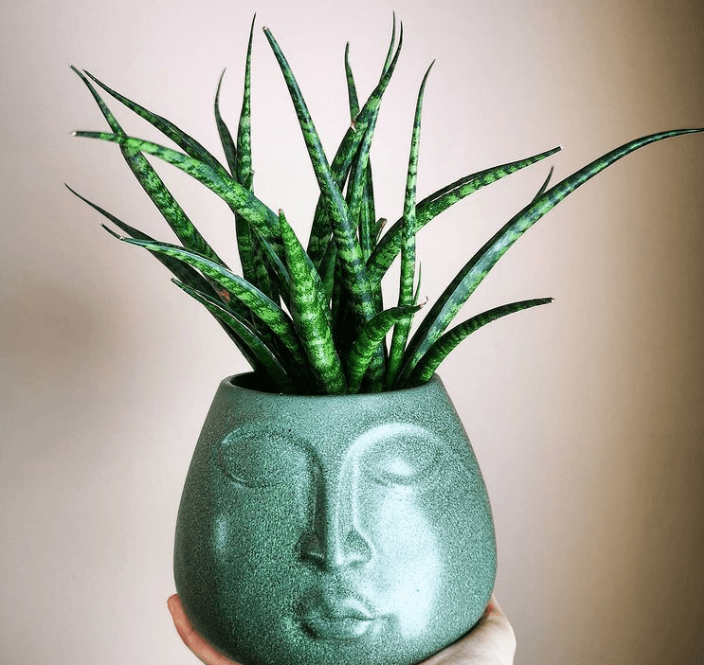
Sansevieria fernwood is an evergreen, relatively hardy, and perennial succulent snake plant that belongs to the family Asparagaceae. This plant has dark green leaves with striking light green tiger-print striping and pointed ends. During spring, this succulent can also bloom outdoor in numerous tiny flowers that grow on a long stock which is about 1 meter in length.
How to grow Sansevieria
Sansevieria plant can be propagated by seeds but also by leaf segments and rhizomes. Segments of leaves and rhizomes resprout easily and grow rapidly forming dense and virtually impenetrable thickets.
How to care for Snake plant
These plants are easy to grow and, in many cases, are nearly indestructible. They will thrive in very bright light or almost dark corners of the house. Here is the snake plant care you have to know to make your plant happy.
Soil
A fast-draining and porous soil are great for these Sansevieria plants. You can use potting mix for succulents. Make sure that the soil drains water freely.
Light
Sansevieria tolerates low light levels but grows best and flowers if given bright light and even tolerates full sun. Under low light conditions, the leaves may become etiolated with a darker green colouration.
Snake plant Watering
How often to water Snake plant? Only water Sansevieria when the soil is completely dry. Since sansevieria is an arid zone plant, watering should be moderate in summer, and very spaced out in winter. Let the substrate dry out completely between two waterings and systematically empty the excess water flowing into the pot.
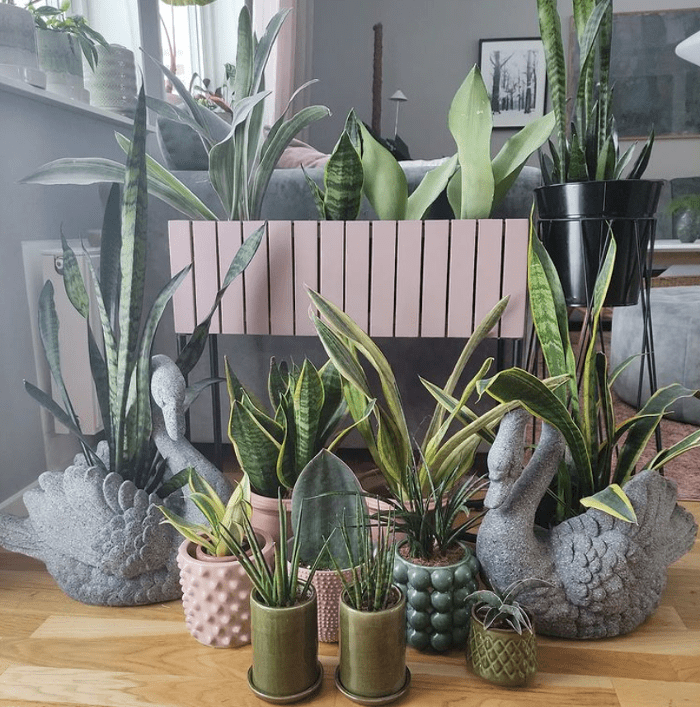
Humidity
Sansevieria doesn’t need a lot of humidity to grow. This succulent will be happy in the average home humidity, so you don’t need to go the extra mile to give it a moisture boost.
Pruning
Snake plant does not need to be trimmed. You just have to remove the dry or damaged leaves.
Repotting
The plant does not need too frequent repotting. Every 4 or 5 years, when you see that she is starting to get really cramped in her pot, give her a new container, 3 to 5 cm larger in diameter and depth, no more. The important thing is that the pot provides good stability to the plant.
Pests and diseases
Particularly resistant, Sansevieria is a plant that is not very susceptible to disease and insects. Its main enemy is excess water.
Toxicity
These plants are toxic for both humans and animals. Ingestion may lead to serious health issues like vomiting and nausea. Thus, keep your kids and pets away from these plants.
Did You find this helpful? Share it with your friends!